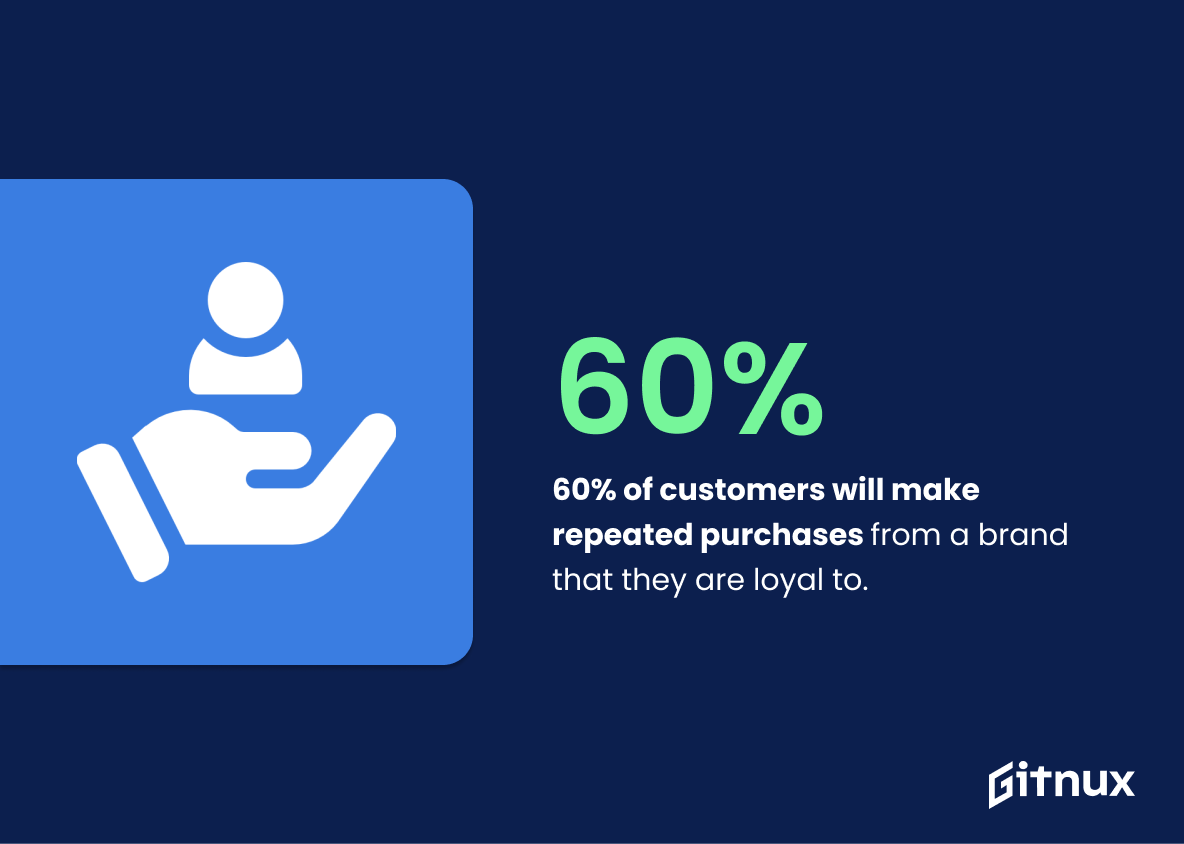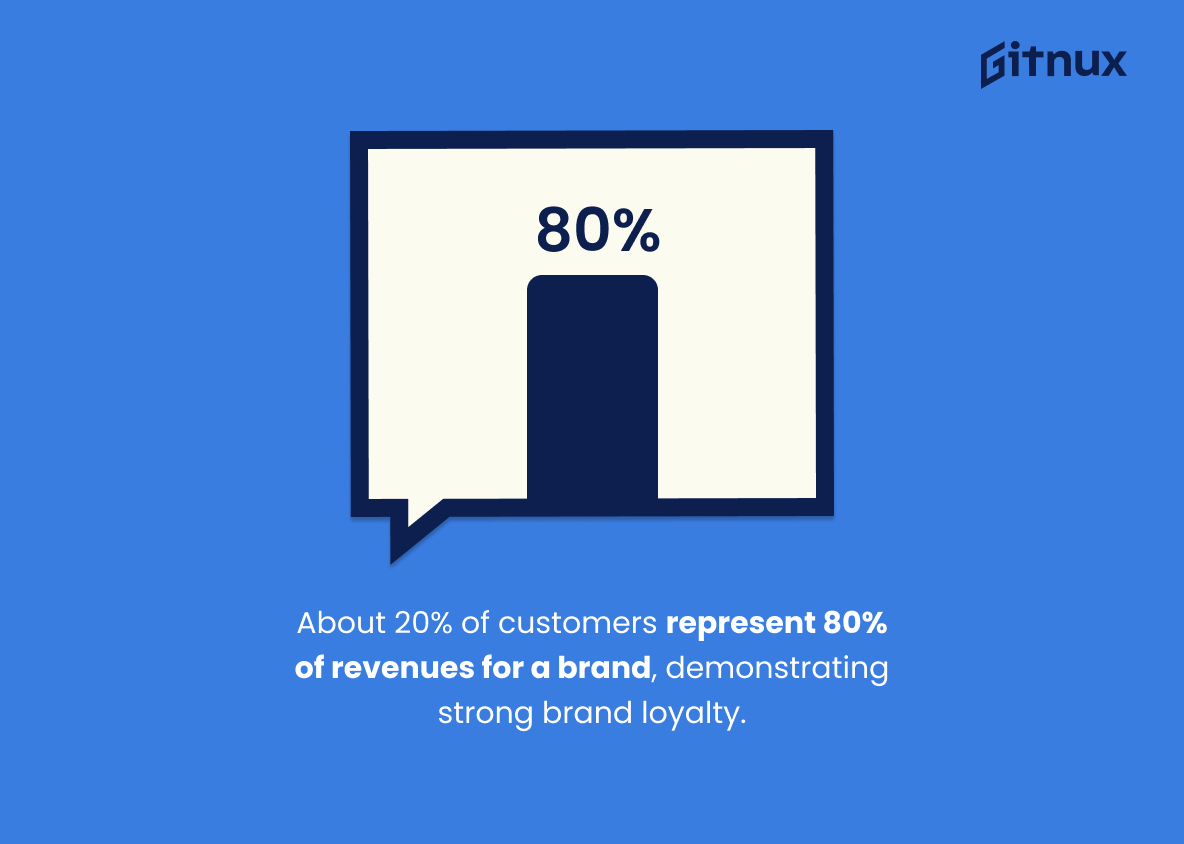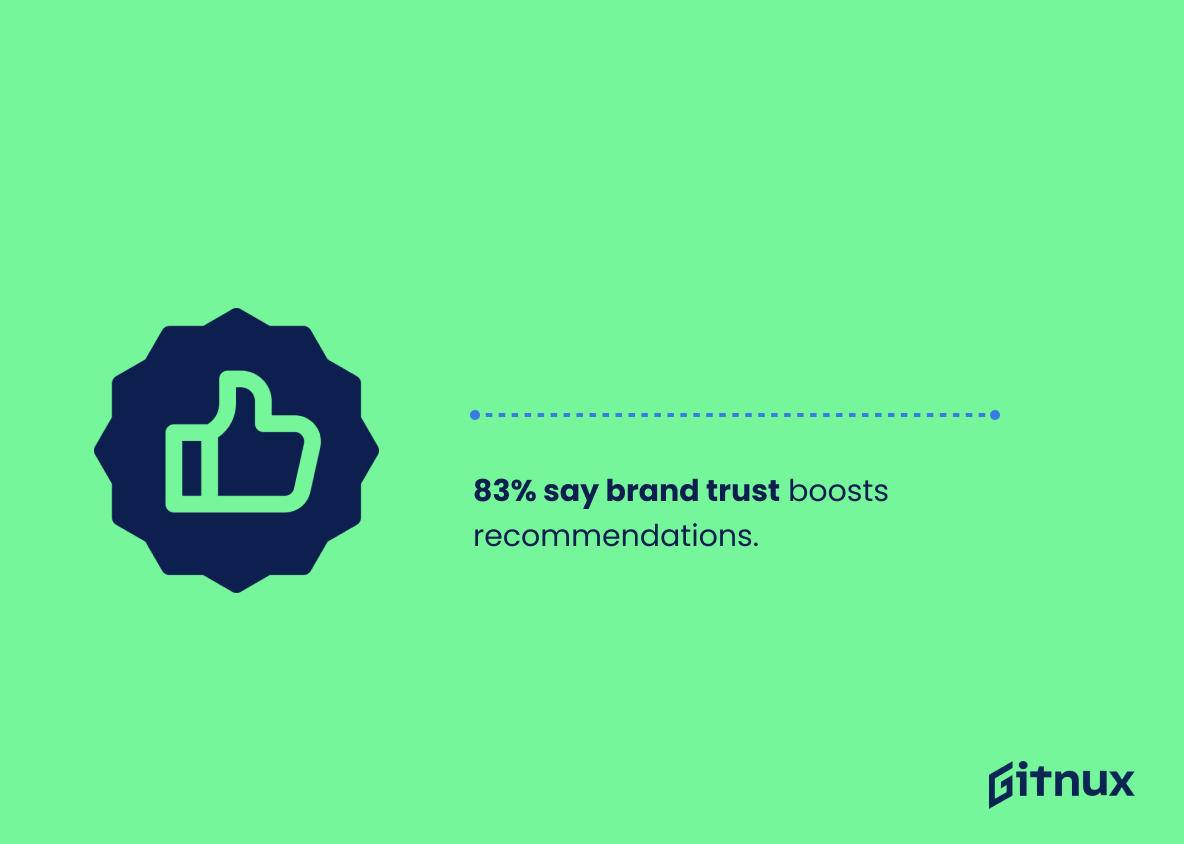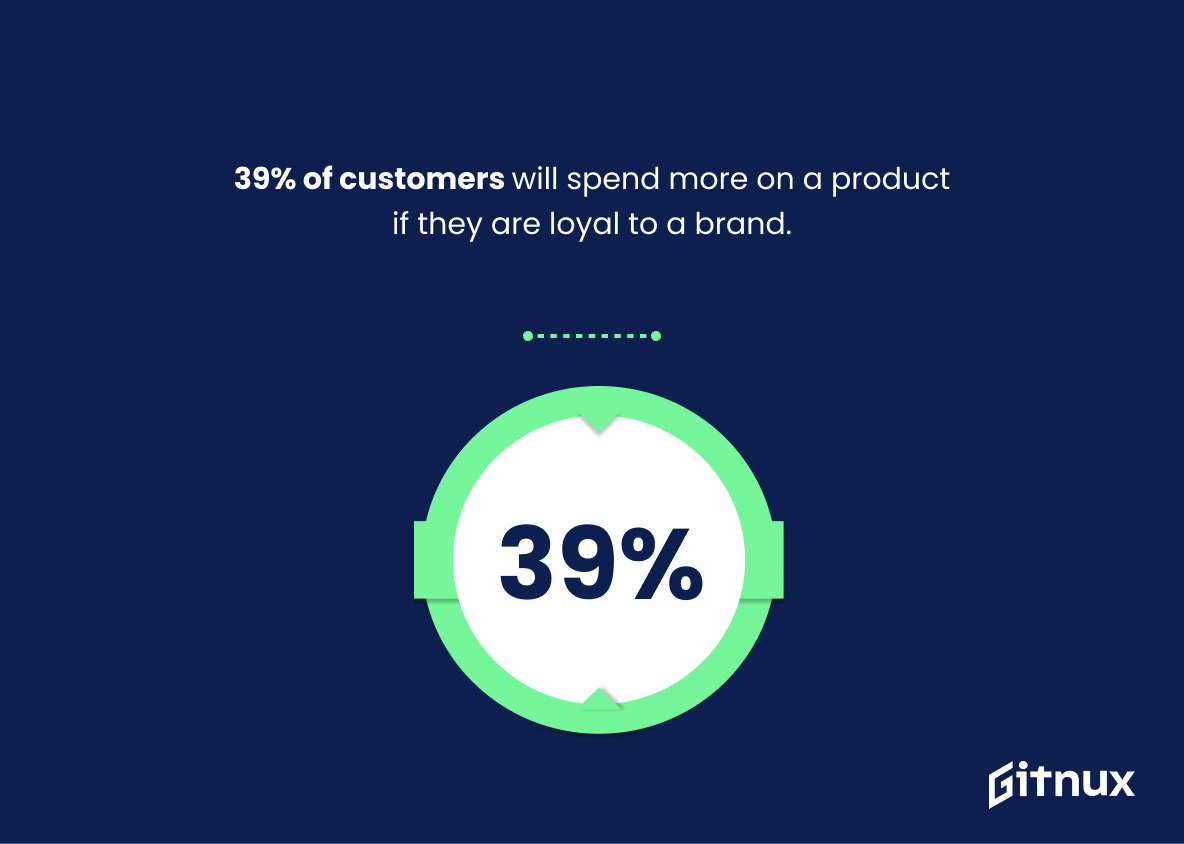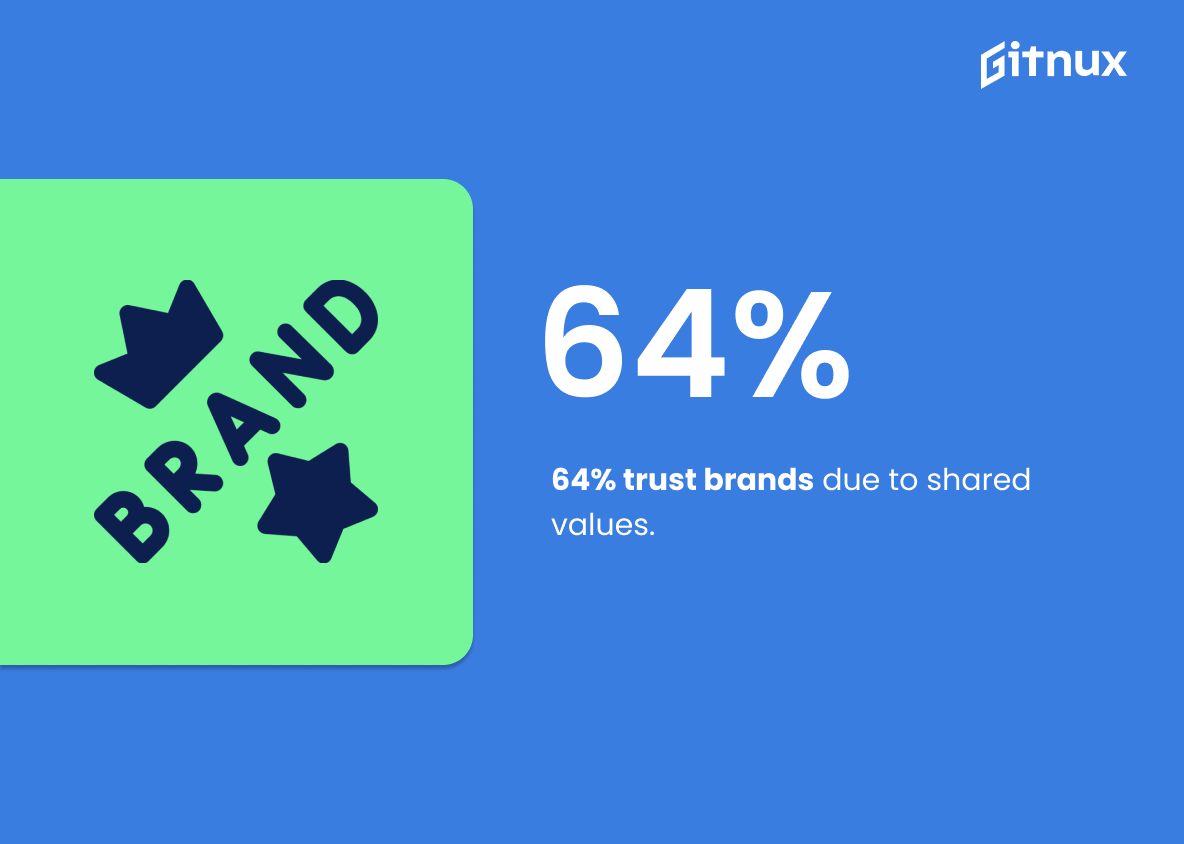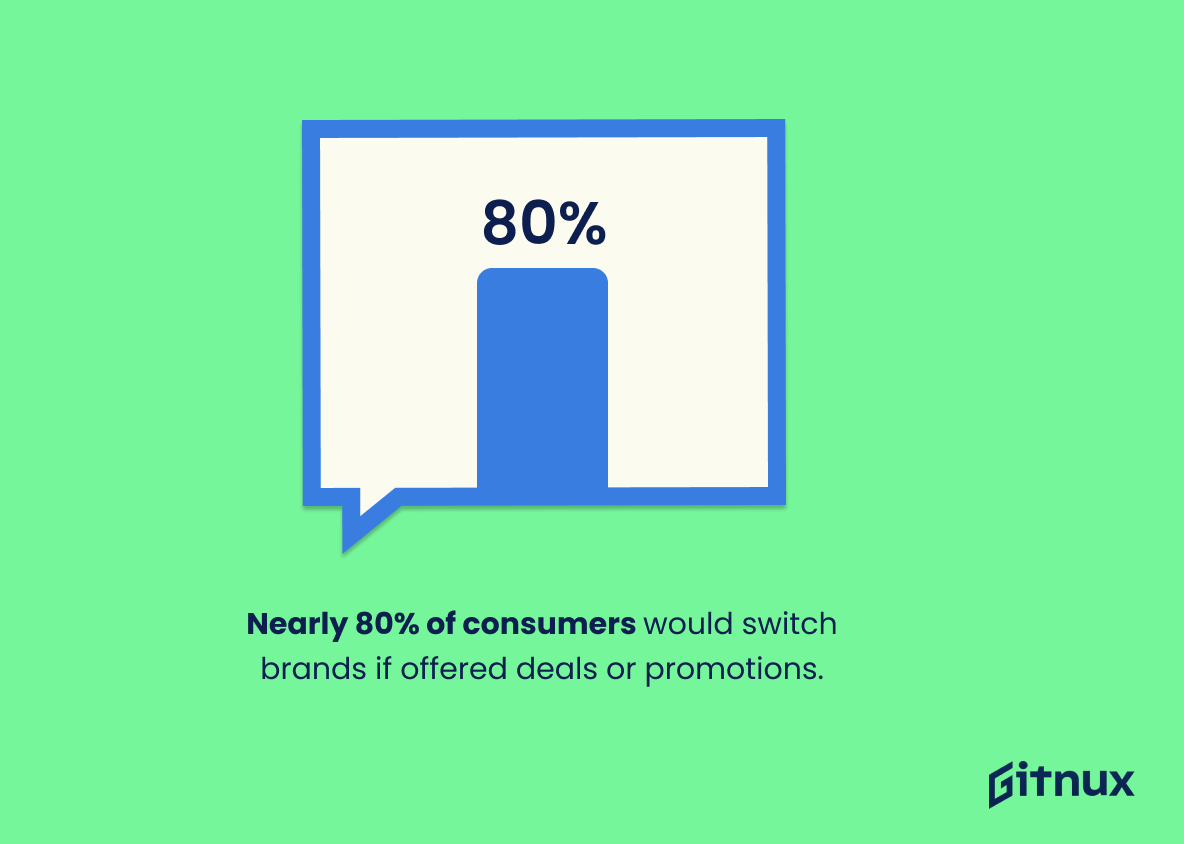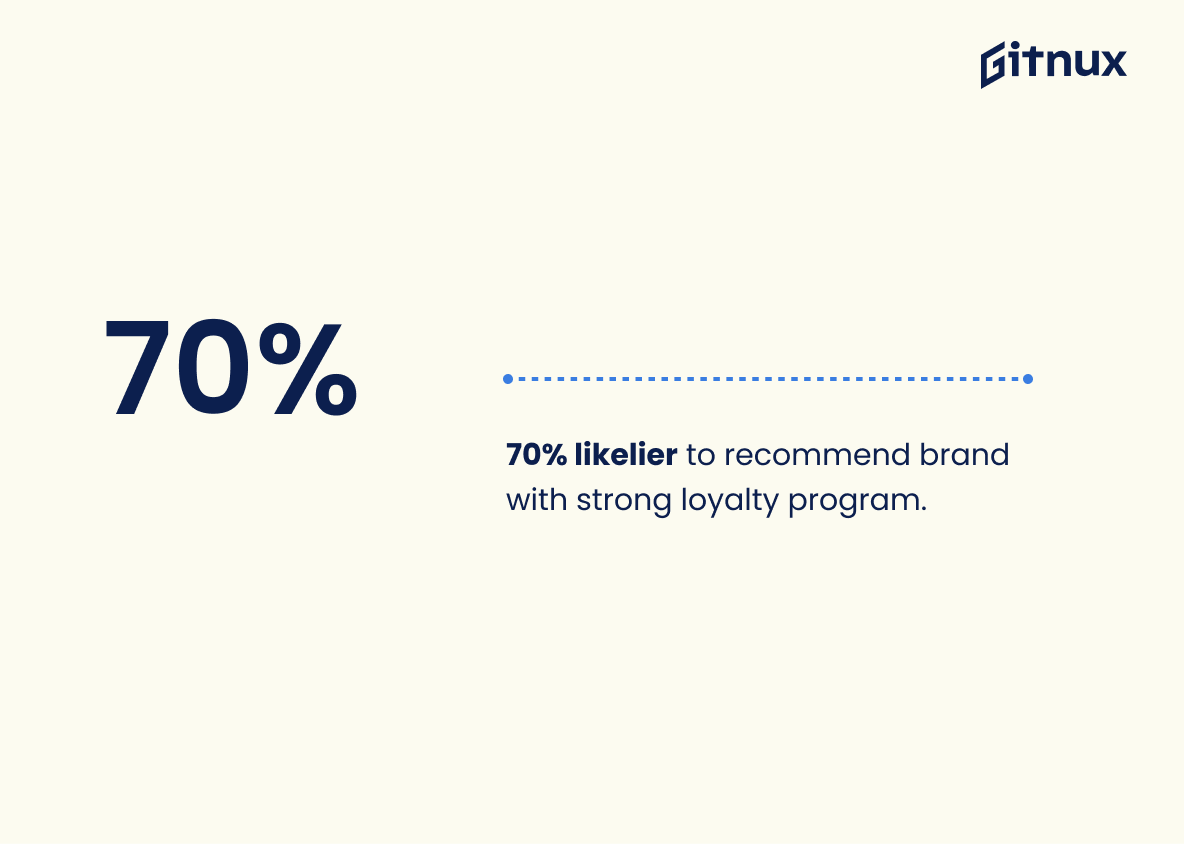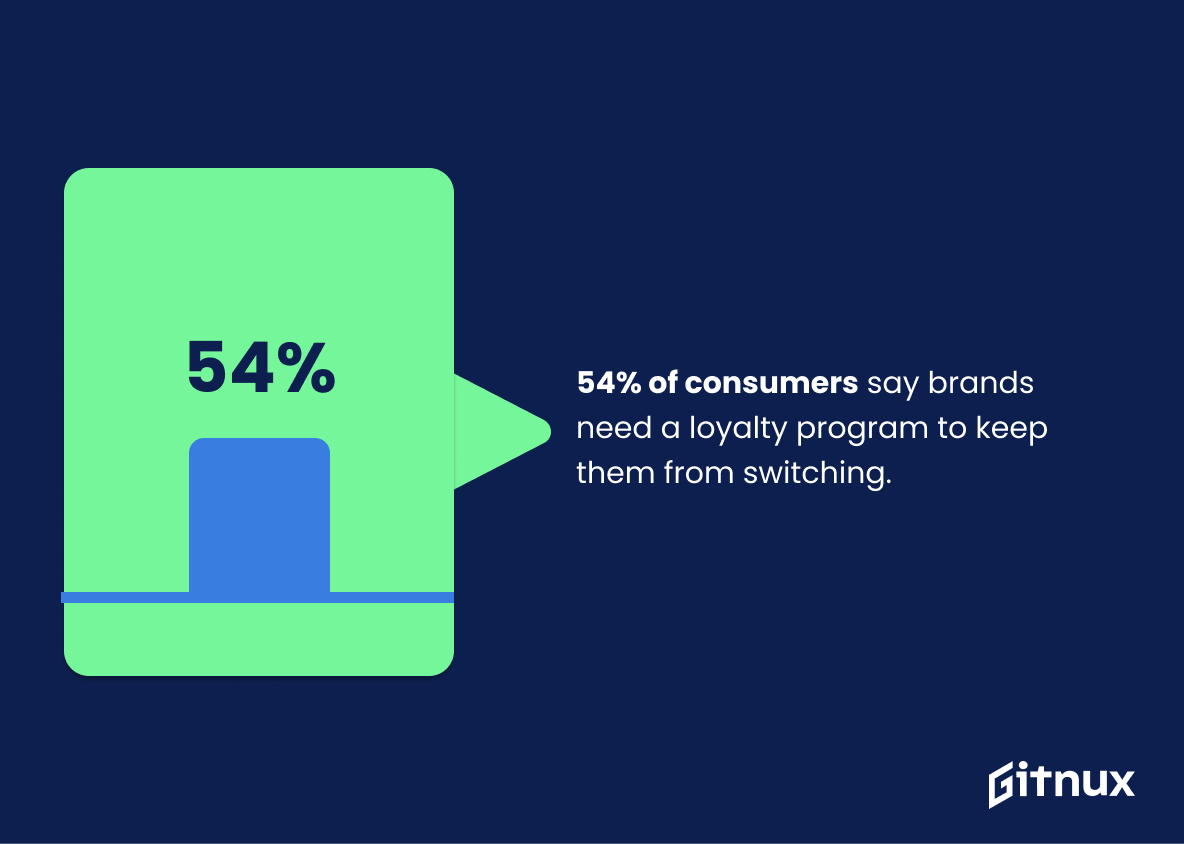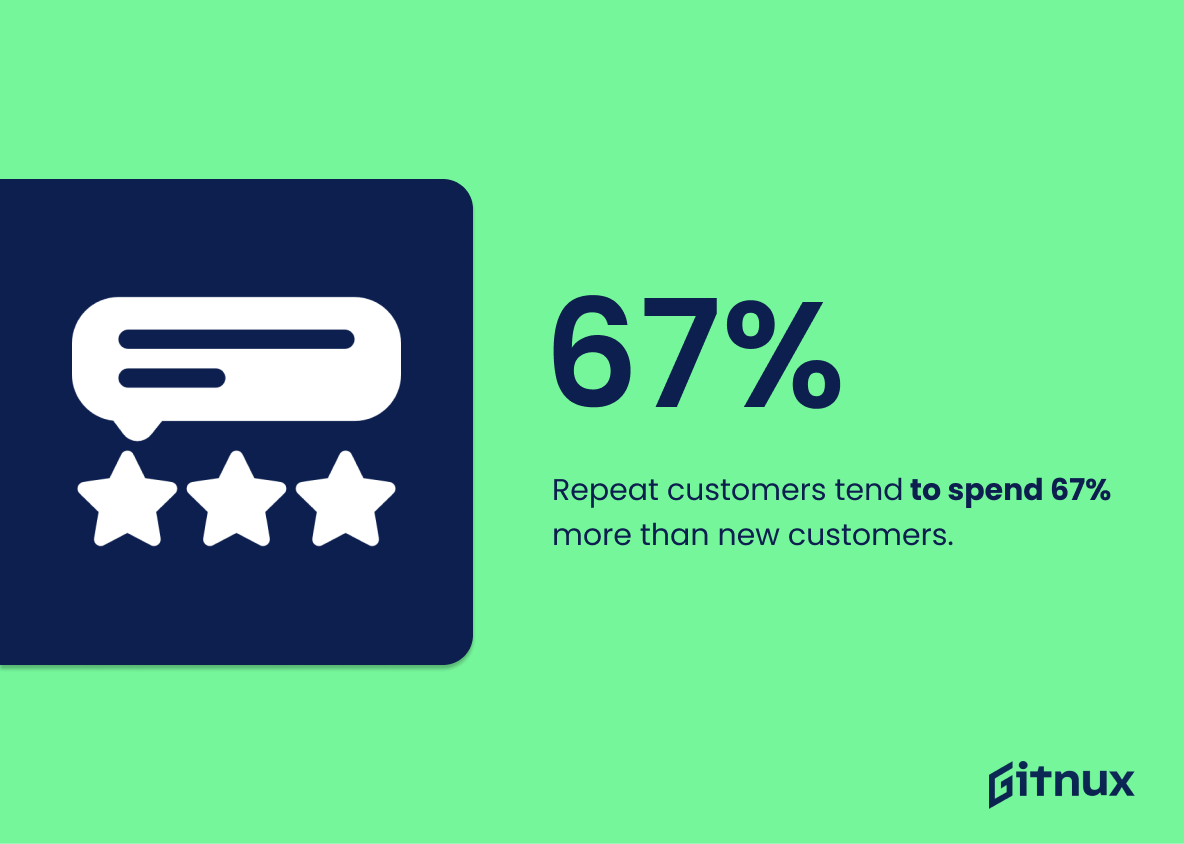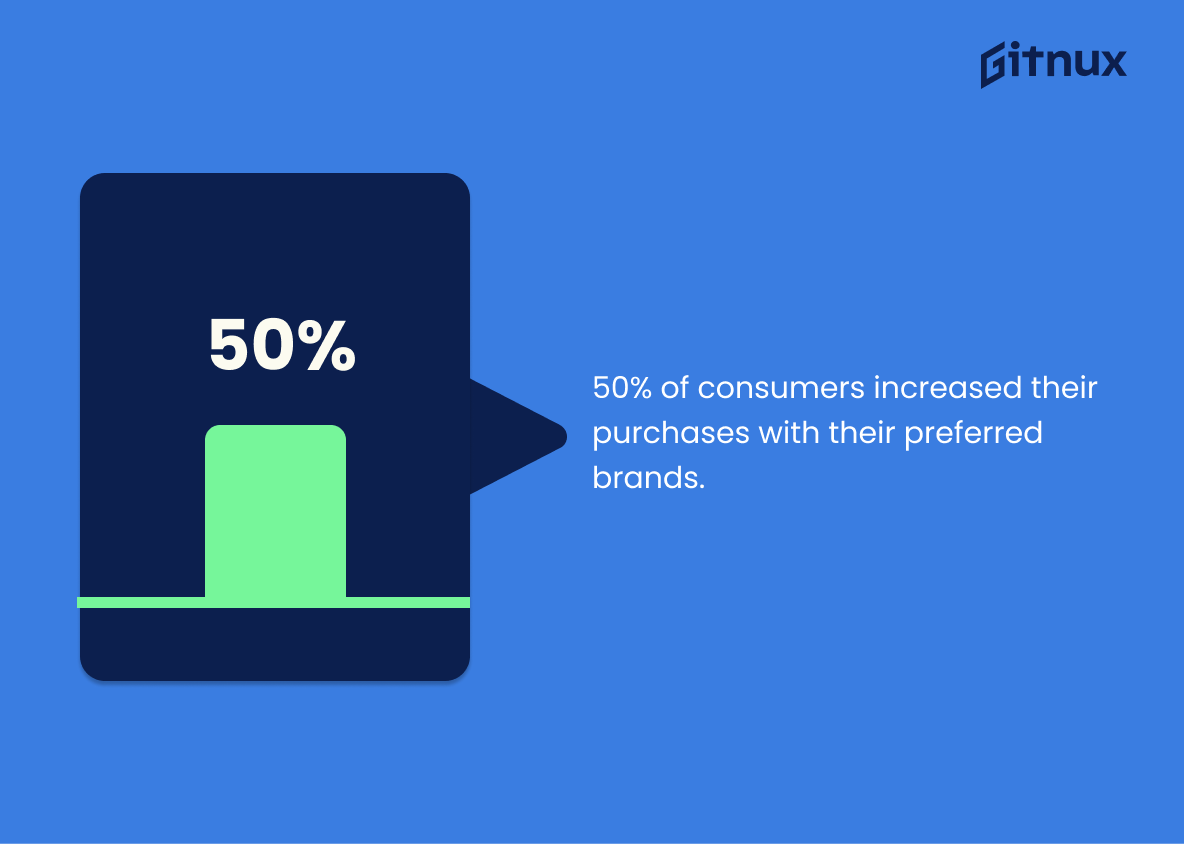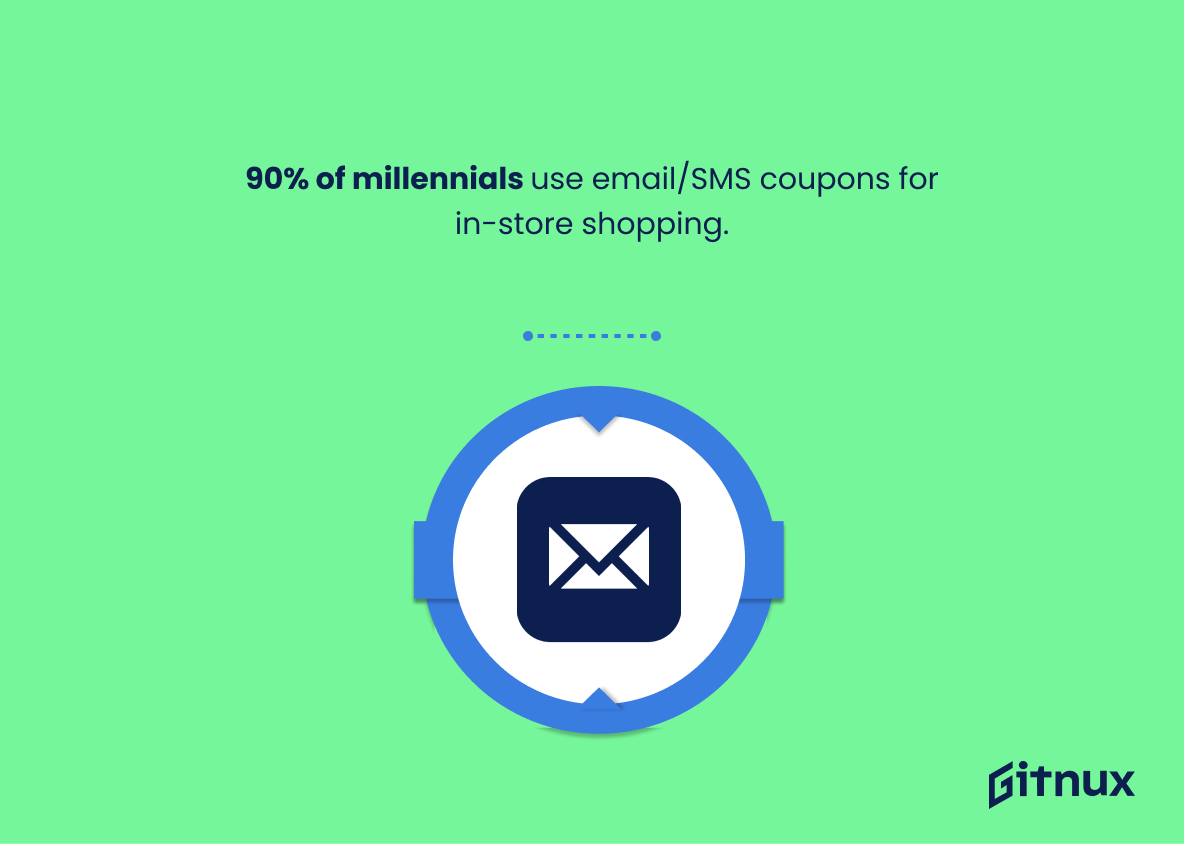In today’s dynamic and rapidly shifting market, brand loyalty plays a pivotal role in a company’s journey to ultimate success. It not only ensures a steady stream of revenue but also ignites effective word-of-mouth marketing, anchoring the brand’s reputation in the industry. Intense competition and customers’ escalating expectations make brand loyalty more challenging and intriguing than ever.
In this blog post, we’ll delve into the world of brand loyalty statistics, shedding light on the captivating numerical narrative of brand allegiance across various sectors. These statistics will not only provide a profound understanding of current trends but also offer foresight into future developments, thus giving brands a chance to not just survive – but thrive – in this contest of loyalty.
The Latest Brand Loyalty Statistics Unveiled
60% of customers will make repeated purchases from a brand that they are loyal to.
Marvel at this golden nugget of information – 60% of customers will return to a brand they love, making multiple purchases, time and time again. That’s no small potatoes in the grand scale of business economy. Every brand-savvy blogger will confirm, that’s a rich vein of revenue just waiting to be tapped into.
In the arena of Brand Loyalty Statistics, this serves as a robust pillar accentuating the importance of nurturing a loyal customer base. Not just because it suggests a considerable percentage of repeated sales, but it also exemplifies the power of trust and deep-rooted connection that a brand can form with its customers.
The blueprint of brand loyalty, it appears, is drawn in repeat purchases rather than one-time deals. Therefore, for a blogger discussing Brand Loyalty Statistics, this is a statistic that intertwines the necessity of earning customer loyalty with the repeated profits from sales. It paints a vivid illustration of why customer loyalty is not only beneficial, but also a cornerstone of maintaining sustained business success.
About 20% of customers represent 80% of revenues for a brand, demonstrating strong brand loyalty.
In the vast galaxy of consumer behavior, this catchy statistic shines brightly like a beacon, guiding us towards the profound understanding of brand loyalty. The intriguing truth that merely one-fifth of customers account for a dominant eighty percent of revenues serves as a clear testament to the immense power brand loyalty commands. Penetrating the noise of the marketplace, this data underlines a compelling narrative about the economics of customer retention and the importance of cultivating loyal followers for a brand.
It also invites marketers and brand strategists to invest, nurture, and foster this significant fraction of customers, as they form the sturdy revenue backbone for the brand. Therefore, this statistic amplifies how a company’s success isn’t just centered around acquiring droves of customers, but rather hinges on nurturing a loyal, dedicated, and robust customer base, setting the tenor for the blog post on Brand Loyalty Statistics.
83% of customers agree that trust in a brand makes them more likely to recommend that brand to others.
In the intricate tapestry of brand loyalty statistics featured in this blog post, the thread of ‘83% of customers agreeing that trust in a brand makes them more likely to recommend that brand to others’ weaves a particularly compelling narrative. It highlights the pivotal role trust plays in shaping consumers’ brand advocacy behaviors.
Picture the 83% as ambassadors, championing and amplifying the brand’s reputation in their social circles, based on the trust they have vested in the brand. The implication is considerable. Not only do these customer recommendations serve to extend the brand’s reach, but they also generate more authentic and credible impressions due to their peer-to-peer nature – a silver bullet in an age where consumers are increasingly resistant to traditional marketing tactics.
In essence, this statistic is a testament to trust being the cornerstone upon which successful and sustained brand-consumer relationships are built. It paints a vivid picture of the potential ripple effect in obtaining customer loyalty hinged on trust, adding another dimension to our understanding of brand loyalty dynamics.
77% of consumers are considered brand loyal.
In the realm of brand loyalty, imagine a vast ocean with 77% of consumers anchoring themselves firmly to their trusted brands. These are not your average customers who sway with the winds of every new product or offer. Instead, they are the stalwarts who hold fast to their preferred brands, weathering the storms of market changes.
They showcase the sheer power of brand loyalty in influencing consumer choices. When you grasp this, you are not merely dealing with dry, impersonal percentages but navigating a sea of consumer fidelity that has vast implications for business strategies.
On average, Americans tend to be loyal to 10 brands.
In a landscape saturated by brands, it’s intriguing to note that, on the median, ten brands orchestrate the symphony of loyalty in an American’s life. This nugget of information serves as a compass in the map of brand loyalty statistics in the blog post.
Firstly, it illuminates just how selective consumers are; amidst the myriad of choices, only a handful manage to make the cut. Companies are thus faced with an imperative – to be within that coveted circle of ten, there is a need to truly differentiate and strive for excellence.
Next, it underscores that there exists a ceiling to brand loyalty, and that even the most dedicated of consumers spread their allegiance fairly wide. This emphasizes the nature of competition in the American marketplace. It’s not about complete monopolization, but sharing space in a consumer’s life with others.
Finally, the statistic throws light on the potential longevity and profitability a brand could enjoy if it becomes one of the “chosen ten”. This provides a quantitative goal for marketers working to increase brand loyalty.
It also indirectly suggests the level of consumer satisfaction and trust required for a brand to earn such fidelity. In the context of the blog post, it certainly enhances the understanding and implications of brand loyalty in the American market.
39% of customers will spend more on a product if they are loyal to a brand.
Diving deeper into the essence of brand loyalty, the compelling statistic reveals that almost 4 in every 10 customers willingly open their wallets wider for products tied to their favorite brands. It’s as if their trust in a brand creates an irresistible magnetic pull, drawing more cash out of their pockets.
This powerful numeric narrative reinforces the significance of cultivating brand loyalty, as it can serve as the bridge between simply surviving and truly thriving in an increasingly competitive marketplace in the context of our blog post about Brand Loyalty Statistics. Here, your brand becomes not just an option, but a preference, making brand loyalty a golden goose for companies aiming for growth, profitability, and resilience.
64% of customers claim that shared values are the primary reason they have a trusted relationship with a brand.
Peeling back the layers of this impactful statistic, we delve into the heart of consumer behavior. It illuminally illustrates that a whopping 64% of customers hinge their trusted alliance with a brand on shared values. It’s akin to building interpersonal relationships but with a commercial spin. In the colorful tapestry of brand loyalty statistics for a blog post, this statistic stands out, serving as a vibrant thread.
It fortifies the understanding that brand loyalty and shared values are inseparable companions on the consumers’ shopping journey. As such, brands keen on weaving a lasting bond with their customers must carefully stitch shared values into their fabric, making it a compelling cornerstone of their narrative.
Nearly 80% of consumers would switch brands if offered deals or promotions.
Delving into the world of brand loyalty statistics, we uncover an intriguing phenomenon encapsulated by this particular data point, ‘Nearly 80% of consumers would switch brands if offered deals or promotions.’ This statistic acts as a metaphorical compass pointer, directing us towards the undeniable influence of deals and promotions on consumer behaviour. It unveils a fascinating dynamic where loyalty seemingly hangs by a thread, swayed by the enticement of profitable deals.
As marketers, understanding such tendencies aren’t merely valuable; they paint a vivid picture of our consumers’ nuanced preferences and guide the formulation of more effective strategies. In the vast canopy of brand loyalty, where steadfastness is prized, this statistic works as a flashlight, illuminating the not so steadfast consumer tendencies that are crucial for initiatives aimed at fostering and maintaining loyalty.
70% of customers are more likely to recommend a brand to friends and family if it has a good loyalty program.
Immerse yourself in the realm of brand loyalty, where one simple yet impactful statistic has the power to build or crumble empires – ‘70% of customers are more likely to recommend a brand to friends and family if it has a good loyalty program.’ It tenderly whispers the integral importance of customer retention strategies, influencing consumers to step into the shoes of brand advocates, creating an involuntary chain of brand promotion. Not just any promotion, but the one grounded on trust and credibility.
In the context of a blog post about Brand Loyalty Statistics, this nugget of truth serves as a powerful reminder to business owners. It nudges them to acknowledge that a well-executed loyalty program can transform customers into a loyal chorus, singing praises about their brand in unison, ushering in a wave of new customers driven by the best kind of advertising – word of mouth. It validates the age-old marketing adage that it is significantly easier to retain a customer than to gain a new one, pointing to loyalty programs as a potent retention tool.
With the revelation woven into this statistic, businesses are implored to reassess, recalibrate and reimagine their loyalty programs. Especially in this age of social affirmation, a recommendation from a trusted friend can greatly influence purchasing decisions. It means brands have a golden thread-in-hand, capable of not only weaving existing customers into a tight-knit loyal community but also expanding the marketplace through credible promotion.
In short, this 70% signifies an unmissable opportunity, a beacon guiding businesses towards cost-effective, loyalty-centric growth, and ultimately, turn their customers into the most convincing marketers.
54% of consumers say brands need a loyalty program to keep them from switching.
Navigating the sea of brand loyalty demands impeccable strategy and insight, and our statistic under the spotlight; ‘54% of consumers professing the need for a loyalty program to prevent switching’, plays a central role. It serves as a treasure map, revealing a significant proportion of consumers express loyalty as a conditional response rather than an absolute devotion, their allegiance tied to the specific benefits they receive.
In essence, in the dynamic dance between consumer and brand, reward systems play a magnetic pull, acting as the glue that bonderizes brand loyalty, and this statistic is a pulsating heartbeat with crucial implications for those researching brand loyalty strategies. Its real-world relevance fuels the power of such data, giving marketers quantifiable justification to prioritize, devise and refine loyalty programs designed to cherish and retain their customer base.
31% of consumers show strong brand loyalty to sports brands.
Numerous insights can be gleaned from the statistic that a substantial 31% of consumers show strong brand loyalty to sports brands. For starters, it illustrates the impressive bond that sports brands have successfully established with nearly one-third of their customers. In a landscape where winning customer loyalty is no less than a high-stakes battle, this figure serves as a testament to their strategic branding efforts.
Delving deeper into this statistic, it brilliantly weaves a narrative on the power of identity and aspiration that sports brands embody. From a blogger’s stand, it ignites thought-provoking discussions about how these brands have turned mere sportswear into symbols of fitness goals, shared camaraderie, and status.
Most importantly, this statistic imparts a strategic lesson for other brands. It underlines the essence of cultivating strong emotional connections with consumers. If replicated successfully in other sectors, this could potentially lead to similar customer loyalty heights. Hence, beyond numbers, this statistic plays out a fascinating story of brand-consumer relationships in the sports industry, offering interesting angles for a blog post focused on brand loyalty.
Repeat customers tend to spend 67% more than new customers.
Highlighting the statistic, “Repeat customers tend to spend 67% more than new customers,” significantly underscores the influential role of brand loyalty on consumer spending habits. In the landscape of brand loyalty statistics, this factual nugget serves as a compelling testament to the power of nurturing long-term relationships with customers.
Indeed, the pursuit of customer retention, as hinted by this statistic, may justifiably surpass the chase for new customer acquisition given the evident spending disparity. Moreover, fundamentally, this stat reveals that loyalty is not a mere emotional facet, but a potent monetary driver in business profitability. “Loyal customers spend more” is not just a catchy business mantra, but a reality substantiated by hard data, enforcing brand loyalty as an imperative strategy for companies to survive and thrive.
61% of customers want brands to reward their loyalty.
Highlighting the statistic that shows 61% of customers desire their loyalty to be rewarded is crucial in a blog post about Brand Loyalty Statistics. It emphasizes the significant role rewards play in fostering brand loyalty among consumers. Brands that ignore this call to action are in peril of losing a large proportion of their customer base.
This particular finding points brands towards an actionable strategy: develop and implement loyalty rewards programs. This enhancement not only satisfies the customer’s desire but also plays a crucial part in increasing customer retention rates, a vital aspect of stable growth for businesses.
Brands that inspire a higher emotional intensity receive 3x as much word-of-mouth as less emotionally-connected brands.
Under the illuminating lens of this brand loyalty statistic, it surfaces as a truth that compelling emotions are a significant catalyst for word-of-mouth marketing. Not just one, but three times as much chatter circulates about brands that have succeeded in sparking heightened emotional connectivity with their consumers. Imagine the power such brands wield.
In a blog post about Brand Loyalty Statistics, this gives a fresh perspective on why businesses should prioritize forging emotional bonds with their target audience. It emphasizes the importance of the emotional value of a brand in driving conversations – a factor just as crucial, if not more, than the tangible value of its products or services.
It’s a valuable chunk of knowledge that gives an insight into consumer psychology, nudging businesses to strategically tailor their endeavors to trigger positive emotions and consequently, encouraging loyalty. Brands that master this art, end up being the chatter stars, spreading their glory through their word-of-mouth champions.
52% of consumers say they are likely to switch brands if they are not making an effort to personalize their communication to them.
Drawing attention to the figure, where more than half – precisely 52% – of consumers expressing a desire to abandon brands neglecting personalized communication, reveals a pivotal trend in customer behavior today. It serves as a call to action for businesses to step up their game in consumer engagement.
In the race for brand loyalty, this detail uncovers the enormous potential and imperative for brands to shift gears to more individualized communication methods. Ignoring this could mean missing an opportunity to connect, and possibly losing, over half of their audience. This is a fascinating snapshot into the rising consumer demand for personal relevance, dictating the rules of the brand loyalty battlefield.
Retaining current customers is 6-7 times les expensive than acquiring new ones.
Diving deep into the crucial role of brand loyalty, we can’t help but highlight a striking statistic. Imagine having to spend 6-7 times more each time you want to bring in a new patron. This is what businesses face when they neglect the significance of customer retention. In the world of numbers and margins, the voice of loyal customers echoes louder than any promotional campaign for new ones. It underscores an invaluable tenet of successful enterprises – spending less to keep a devoted customer is a rewarding investment.
Thus, the respective statistic is an absolute linchpin in our discussion on brand loyalty. Alongside offering a remarkable testament to the fiscal benefits of cultivating lasting customer relationships, the statistic also paints a broader picture. It signals the heart of strategical changes for businesses: shifting a chunk of their focus and resources from acquiring new customers to nurturing and retaining the existing ones. After all, smaller investments with greater returns is far from a business strategy – it’s a survival strategy.
75% of consumers expect brands to contribute to their wellbeing and quality of life.
Delving into the universe of Brand Loyalty dynamics, one statistical revelation unfolds surprisingly – a staggering 75% of consumers now anticipate brands to make a meaningful difference to their well-being and quality of life.
Relating this powerful insight to brand loyalty shines a new light on understanding consumer behaviors. A brand now carries more than just the tangible value of its commodities. Customers are raising the bar of expectations, seeking brands that intertwine with their life path, heightening their well-being and enhancing their life quality.
The implications are significant. Brands who heed this call and align their strategies accordingly stand a better chance of fostering a deeper sense of customer loyalty. It propels them to think beyond the transactional perspective, nurturing a long-term relationship with their audience.
In essence, this statistic threads a new narrative in the brand loyalty discourse. It unveils a paradigm shift where customers yearn for a symbiotic connection with their beloved brands, thereby reinforcing their loyalty. Catching this wave of consumer sentiment could indeed draw a new trajectory for businesses seeking to establish rock-solid brand loyalty.
50% of consumers increased their purchases with their preferred brands.
Delving into the heart of brand loyalty statistics, it’s intriguing to note that half the consumers revel in a stronger affinity towards their preferred brands, inevitably augmenting their purchases. This numerical narrative paints a vivid picture of brand allegiance in current consumer behaviors. Deep-seated in this is a wake-up call for businesses to amplify their focus on fostering brand loyalty.
In the ever-competitive marketplace, maintaining a loyal customer base could be a significant determinant of the company’s sustainability, profitability, and growth. Therefore, this vital piece of data shows that nurturing deeper connections with customers is not just beneficial but a strategic imperative.
90% of millennials are using coupons they receive via email, SMS, and mobile for their in-store purchases.
Drawing from the compelling insight that 90% of millennials utilize coupons received via email, SMS, and mobile for in-store purchases, it underscores an emerging paradigm in brand loyalty statistics. More than just tracing shifting consumer behaviors, it sheds light on how digital channels are shaping brand loyalty. In a digital era where millennials are key market drivers, this figure substantiates the pivotal role that personalized email, SMS, and mobile strategies can play in nurturing brand loyalty.
Moreover, it provides a quantifiable lens to view the symbiosis between value offerings, such as coupons, and consumer allegiance. By tapping into this behavior, brands can refine their loyalty programs, transforming sporadic millennial shoppers into habitual consumers, and thus, solidifying their market standing in the long run.
So, it’s not about decoding some elusive millennial shopping enigma, but rather weaving digital touchpoints — like email and mobile coupons — into the very fabric of brand-to-consumer engagement to foster stronger brand relationships and loyalty.
Conclusion
Brand loyalty statistics clearly indicate the importance of cultivating strong, positive relationships with customers. The data overwhelmingly show that loyal customers are more likely to make repeat purchases, refer others, and resist switching to competitors. Surviving in today’s fiercely competitive business environment demands more than just acquiring customers; it mandates fostering a sense of loyalty that compels customers to choose your brand consistently.
Thus, businesses must invest in understanding their audience, personalizing their journey, and consistently delivering top-notch service and quality. These efforts pay significant dividends, contributing to sustainable growth, profitability, and robust market presence in the long run.
References
0. – https://www.www.pure360.com
1. – https://www.www.forbes.com
2. – https://www.www.valassis.com
3. – https://www.smallbiztrends.com
4. – https://www.www.yotpo.com
5. – https://www.www.smarterhq.com
6. – https://www.sloanreview.mit.edu
7. – https://www.hbr.org
8. – https://www.www.annexcloud.com
9. – https://www.www.inmoment.com
10. – https://www.www.acquire.io
11. – https://www.www.statista.com
12. – https://www.www.havas.com
13. – https://www.info.bondbrandloyalty.com
14. – https://www.www.edelman.com
15. – https://www.www.icgroupinc.com
16. – https://www.www.b2binternational.com
